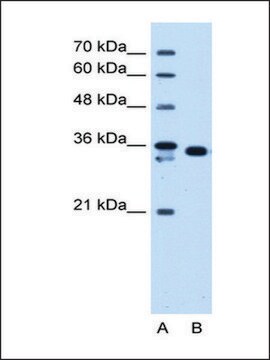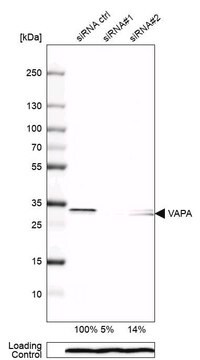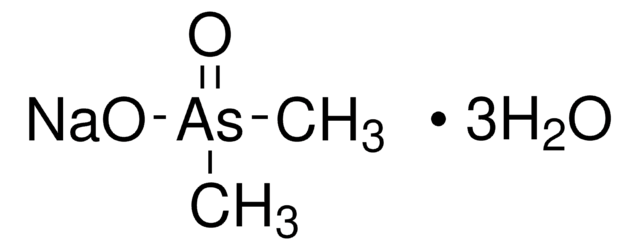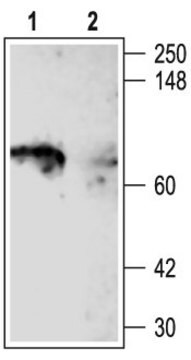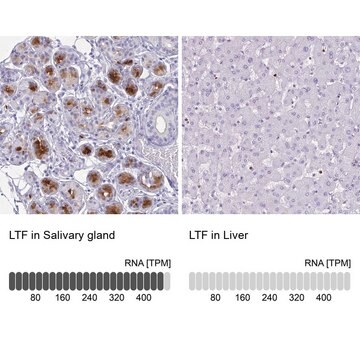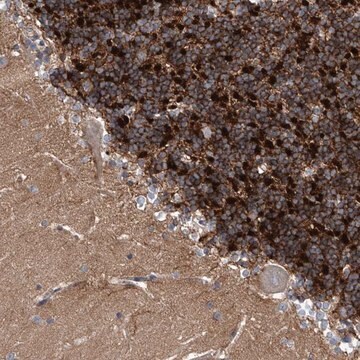推荐产品
生物源
rabbit
品質等級
共軛
unconjugated
抗體表格
affinity isolated antibody
抗體產品種類
primary antibodies
無性繁殖
polyclonal
形狀
lyophilized powder
物種活性
rat, human
技術
western blot: 1:200 using rat heart membranes
UniProt登錄號
運輸包裝
dry ice
儲存溫度
−20°C
目標翻譯後修改
unmodified
基因資訊
human ... KCNQ1(3784)
mouse ... Kcnq1(16535)
rat ... Kcnq1(84020)
特異性
Does not cross react with other QKT proteins.
免疫原
synthetic peptide corresponding to amino acid residues 661-676 of human KCNQ1. This sequence has 14/16 residues identical in rat and mouse.
標靶描述
Potassium Channel Kv7.1 (KCNQ1) encodes a protein for a voltage-gated potassium channel required for the repolarization phase of the cardiac action potential. The gene product can form heteromultimers with two other potassium channel proteins,
外觀
Lyophilized powder from phosphate buffered saline containing 1% bovine serum albumin and 0.025% sodium azide.
免責聲明
Unless otherwise stated in our catalog or other company documentation accompanying the product(s), our products are intended for research use only and are not to be used for any other purpose, which includes but is not limited to, unauthorized commercial uses, in vitro diagnostic uses, ex vivo or in vivo therapeutic uses or any type of consumption or application to humans or animals.
未找到合适的产品?
试试我们的产品选型工具.
儲存類別代碼
13 - Non Combustible Solids
水污染物質分類(WGK)
nwg
閃點(°F)
Not applicable
閃點(°C)
Not applicable
Christian A Hübner et al.
Human molecular genetics, 11(20), 2435-2445 (2002-09-28)
Ion channels serve many functions apart from electrical signal transduction: chemical signalling (Ca(2+) as a second messenger), transepithelial transport, regulation of cytoplasmic or vesicular ion concentration and pH, and regulation of cell volume. Therefore, ion channel dysfunction can cause diseases
Kazuya Yamagata et al.
Biochemical and biophysical research communications, 407(3), 620-625 (2011-03-24)
KCNQ1, located on 11p15.5, encodes a voltage-gated K(+) channel with six transmembrane regions, and loss-of-function mutations in the KCNQ1 gene cause hereditary long QT syndrome. Recent genetic studies have identified that single nucleotide polymorphisms located in intron 15 of the
J Robbins
Pharmacology & therapeutics, 90(1), 1-19 (2001-07-13)
KCNQ genes encode a growing family of six transmembrane domains, single pore-loop, K(+) channel alpha-subunits that have a wide range of physiological correlates. KCNQ1 (KvLTQ1) is co-assembled with the product of the KCNE1 (minimal K(+)-channel protein) gene in the heart
我们的科学家团队拥有各种研究领域经验,包括生命科学、材料科学、化学合成、色谱、分析及许多其他领域.
联系技术服务部门